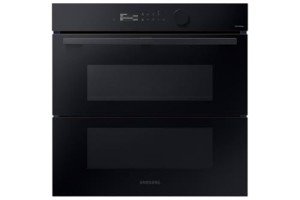15 Gifts For The Benefits Of Self Cleaning Ovens Lover In Your Life

The Benefits of Self-Cleaning Ovens
Over the last few years, kitchen area technology has advanced considerably, and among the most noteworthy innovations is the self-cleaning oven. This hassle-free device has actually become a popular option for lots of households due to its capability to streamline a frequently tedious chore. However what exactly are the benefits of self-cleaning ovens? This post will explore this subject in depth, analyzing the advantages, features, and possible disadvantages of these modern-day home appliances while supplying answers to common questions.
Comprehending Self-Cleaning Ovens
Self-cleaning ovens come geared up with a specialized cleaning mechanism that enables them to clean their interiors without manual scrubbing. The majority of self-cleaning ovens use high temperatures to burn residue and food particles, transforming them into ash that can be quickly cleaned away. There are usually two main cleaning modes: a pyrolytic cleaning cycle and a steam cleaning cycle.
- Pyrolytic Cleaning: This technique raises the oven's temperature to a range between 800 ° F and 1000 ° F (roughly 425 ° C to 540 ° C). At these temperature levels, food residues are incinerated, leaving just a great ash that can be swept away.
- Steam Cleaning: This technique uses steam to loosen gunk and grease from the oven's surface areas, making it much easier to wipe away any staying debris without severe temperatures.
Key Advantages of Self-Cleaning Ovens
Self-cleaning ovens provide different benefits that make them an attractive option for anybody thinking about cooking area efficiency and cleanliness. Below are some of the most significant benefits:
1. Convenience
Among the most considerable benefits of self-cleaning ovens is the benefit they offer. Users can just set the cleaning cycle and address other tasks without the need for manual scrubbing or extreme chemicals.
2. Time-Saving
Self-cleaning ovens considerably minimize the time invested in cleaning. A standard oven can take hours to tidy if scrubbing and chemical cleaners are included, whereas a self-cleaning cycle typically takes about 2-4 hours.
3. Improved Hygiene
Keeping a tidy oven is necessary for food safety. Self-cleaning ovens efficiently remove food residues, grease, and bacteria, reducing the risk of cross-contamination and making sure a cleaner cooking environment.
4. Reduced Use of Chemicals
Standard oven cleaning often involves making use of strong and damaging chemicals, which can position health risks. Using a self-cleaning oven removes the requirement for these products, making it a much healthier option for homes.
5. Energy Efficiency
Self-cleaning ovens are created to stand up to high temperature levels, and while they do consume energy during the cleaning cycle, numerous models are crafted to be energy-efficient, minimizing the total effect on energy bills.
Factors To Consider and Potential Drawbacks
While the benefits of self-cleaning ovens are engaging, there are some factors to consider that property owners must be aware of:
1. Heat Emission
During the pyrolytic cleaning process, ovens can end up being very hot, which might posture a danger in homes with little kids or family pets. Appropriate safety measures need to be taken to guarantee safety during the cleaning cycle.
2. Period of Cleaning Cycles
Although self-cleaning ovens save time compared to manual cleaning, the self-cleaning cycle itself still requires numerous hours to complete. This time aspect should be factored into cooking plans.
3. Preliminary Cost
Self-cleaning ovens might have greater in advance costs compared to non-self-cleaning models. However, the financial investment can settle in time through minimized cleaning costs and time conserved.
4. Possible for Smoke and Odor
Some users have reported undesirable smells or smoke during the self-cleaning process, particularly if there is a significant quantity of built-up debris. Ensuring proper ventilation can assist reduce these concerns.
Regularly Asked Questions (FAQs)
1. How frequently should I use the self-cleaning feature?
It is typically advised to utilize the self-cleaning function when every couple of months, depending on how often you utilize your oven. Heavy users may think about more regular cleaning, while irregular users can stretch the intervals.
2. Can I utilize my oven while it's self-cleaning?
No, it is advised not to use the oven while it is in self-cleaning mode. The oven ends up being extremely hot, and food ought to not be cooked during this process.
3. Do self-cleaning ovens need special cleaning products?
No, self-cleaning ovens typically do not need any special cleaning items. The heats take care of cleaning, and any residue can simply be wiped away with a moist fabric after the cycle is total.
4. Will using the self-cleaning function injure my oven?
When utilized according to the maker's instructions, the self-cleaning feature must not harm your oven. However, constant use at really high temperatures might potentially impact its long-term durability.
The benefits of self-cleaning ovens are clear: they offer unparalleled benefit, save time, boost health, reduce chemical use, and offer prospective energy efficiency. While there are Self Cleaning Oven Durability and possible downsides to be familiar with, the pros typically surpass the cons for many house owners. The self-cleaning function represents a smart innovation in kitchen area technology, making the job of maintaining a tidy and hygienic cooking environment simpler and more manageable.
| Function | Self-Cleaning Ovens | Conventional Ovens |
|---|---|---|
| Cleaning Method | High-Temperature Burn | Manual Scrubbing |
| Time Required | 2-4 hours | A number of hours |
| Chemical Use | None required | Typically required |
| Convenience | High | Low |
| Expense | Greater upfront | Lower upfront |
In summary, self-cleaning ovens deliver a blend of efficiency, hygiene, and ease, making them a worthwhile addition to modern-day kitchen areas.

